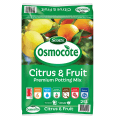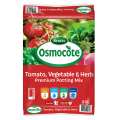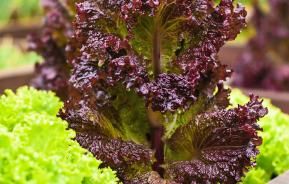A plant’s fruit or vegetable is vital to seed production and is an essential component in creating future generations.
Tomatoes, pumpkins, zucchinis, beans, peas, cucumbers, sweet corn, chokos and eggplants are just a few of our common vegetables that are really fruits.
For edible 'fruits' to develop, the flowers of these plants need to be fertilised by the transfer of pollen from one flower to another - an action known as pollination.
No Pollination = No Crop
Meet our welcomed pollinators:
Bees
Without pollination, fertilisation doesn't occur, fruit doesn't grow, seeds don't develop and crops fail.
Bees are the best known pollinators - they collect pollen from a flower on their legs and deposit it in another as they move from bloom to bloom collecting nectar to take back to their hives.
While bees are the true ‘work horses’ of the garden they're not the only pollinators to look out for.
Hoverflies
Small usually black or white/yellow banded flies that literally hover on the spot before darting off at speed to another flower.
Hoverflies feed on nectar, collecting pollen on their bodies that they transfer to other flowers when they move on. Some hoverflies are also natural predators of aphids - a handy additional attribute that endears them to gardeners!
Butterflies
Most butterflies are nectar feeders. They have a long 'proboscis' (feeding tube) which delves into flowers and through which they draw up nectar. As they feed they also gather pollen on their bodies which they will deposit in other flowers as they move around searching for food.
Attracting butterflies to the garden by planting nectar-rich flowering plants has many benefits - they look pretty and they serve to assist in food production.
Moths
Some, but not all, moths are attracted to nectar-rich flowers in the garden. They may also be seen on flowers that trap moisture after watering or rainfall. As pollinators they are not 'top of the list' because they are fewer in number and are not as active as bees or butterflies.
Native Bees
Blue banded and other native bees are often referred to as 'solitary bees' - they do not form large colonies, swarms or hives although the females may nest communally.
Native bees are active foragers and therefore good pollinators - they may visit several hundred flowers a day. Flower preferences include tomatoes, basil, sage and rosemary.
Some native bees are stingless, others will sting but they are not normally as aggressive as honey bees.
Why Pollinators Are So Important
Even though many of the fruit-producing vegetable varieties we grow today are hybrids that do not set live (viable) seeds, pollination of their flowers is still needed for them to develop fruits.
Generally 'heritage', 'heirloom' and 'open-pollinated' varieties will set viable seeds when pollinated. If you want to save seeds from your crops to sow next year, make sure you choose varieties that have not been hybridised.
Birds do it, bees do it, even plants do it!
Plants are sexual beings! Male pollen is deposited on the sticky female stigma. Each pollen grain produces a fine tendril which grows down through the style into the ovary, where fertilisation occurs.
Pollinating insects are needed to transfer pollen from the anthers to the stigma (see the cross section diagram of a typical flower).
Many plants need 'cross pollination' to set fruit - pollen must be carried from one flower to another flower of the same type.

To produce a juicy ripe tomato, for example, pollen may be taken from one flower and deposited in another in the same cluster, on the same plant, on another plant in the same garden or a tomato plant in perhaps a neighbour's garden.
Some flowers are self-fertile - an insect in a flower can transfer pollen from the anthers to the stigma as it collects nectar.
Other plants have separate male and female flowers - pumpkins, zucchinis, squashes are typical examples. To set fruits, the female flowers must be visited by a pollinator that's just been in a male flower.
Pollen transfer is most often done by insects, although movement of the plant due to people or animals brushing past or wind may also have some effect.
How a fruit develops
When a flower has been pollinated and the male pollen has fertilised it, the flower itself starts to fade - it's done its job! The ovary at the base of the flower will start to swell and develop into the seed-bearing fruit.
Lack of pollination may be due to:
• Poor weather - cold, wet reduces insect populations.
• Lack of bees and other insects in your area.
Attracting Pollinators
While the flowers of the crops you are growing will attract some pollinating insects, you can improve the prospects by growing a few bee and butterfly attracting plants around the edge of or close to the vegetable garden.

Bees
- Purple, blue & yellow flowered plants, like daisies, lavender, calendula, mint & basil
Butterflies
- Buddleia, scabiosa, gaura, echinacea
Aus Native Bees (including Blue-Banded)
- Nectar-rish native plants, like grevillea, banksia, hakea & callistemon
Top Tip
Plant a range of brightly coloured flowering annuals as a border round the vegetable patch - marigolds, pansies, petunias, sunflowers are all insect-attracting.
Surround the vegetable garden with a permanent hedge of low growing shrubs known as good pollinator attractors - lavender, thyme, geraniums, mini and groundcover roses.
Bees are great, BUT...
Bees can sting - and some people are highly allergic to bee stings.
Where there are bees, there may also be European wasps, which are equally dangerous.
How to avoid them
Bees and wasps are most active during the warmer hours of the day - from mid morning until late afternoon.
To avoid them, do your gardening:
- Early in the morning, before they are up and about, or;
- In the evening after they've gone back to their hives.
Don't disturb or irritate them by watering when they're active.
Other useful tips for reducing the risk:
- Check glasses, cans and straws before drinking from them.
- Collect fallen fruit and dog or other animal droppings (flies can attract bees and wasps).
- Don't wear bright colours or floral prints when bees are active.
- Avoid loose clothing that may trap bees between the garment and your skin.
- Preferably mow the lawn or trim hedges early morning or in the evening when bees are less active.
- Contact your local council for advice if you find a European wasp nest on your property.
- Bees may occasionally swarm - call a registered apiarist to remove it. A fee may apply.
- If one or two bees fly around you, stay calm and slowly back away - swatting at it may cause it to sting.
- If you are stung or a mass of bees /wasps start to fly around, cover your mouth and nose and quickly leave the area.
- When a bee stings, it releases a chemical that attracts other bees. If you can, go indoors or get into a vehicle for protection.
Tips for treating bee and wasp stings
|
|
Remove the stinger as quickly as possible. |
|
|
Wash the affected area with soap and water. |
|
|
Apply a cold compress or ice pack. |
|
|
Take an over-the-counter pain reliever as needed - some sources recommend ibuprofen. |
|
|
If the sting is on an arm or leg, elevate it. |
|
|
Apply hydrocortisone cream or calamine lotion to alleviate redness, itching or swelling. |
|
|
If itching or swelling is moderate to severe, an oral antihistamine containing diphenhydramine (over the counter Benadryl Allergy tablets) or chlorpheniramine (over the counter Sudafed, Demazin, Codral) may reduce symptoms. |
|
|
Avoid scratching - it will worsen the itching and swelling and may increase the risk of infection. |














